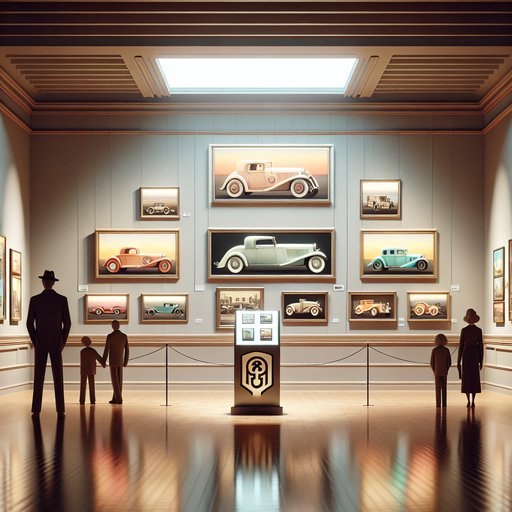
Museums and collections are revisiting renowned paintings that put automobiles at center stage, using fresh exhibitions, rehangs, and conservation insights to link studio practice with the history of mobility. Over the past two years, curators have clustered Andy Warhol’s ‘Cars’ canvases, Tamara de Lempicka’s chic Bugatti self-portrait, and American scene pictures by Grant Wood, Thomas Hart Benton, and photorealist Robert Bechtle to trace how artists turned vehicles into emblems of speed, status, risk, and everyday life. The result is a clearer view of how car culture shaped iconography across the 20th century and how audiences read these images today.
Corporate and museum collections have led the charge, with the Mercedes-Benz Art Collection’s presentations of Andy Warhol’s ‘Cars’ series drawing design devotees and art audiences in equal measure. Curators have emphasized Warhol’s serial method, pairing large silkscreens of historic Mercedes models with process material that unpacks color separations and editioning. Recent showings have often folded in period photography and design drawings to anchor the paintings in industrial history, sharpening the dialogue between studio and factory. Educators report that these pairings help first-time visitors parse why a brand icon can function as both product image and Pop artifact.
Art Deco glamour has returned to the spotlight through Tamara de Lempicka’s Self-Portrait (often called ‘Tamara in a Green Bugatti,’ 1929), a touchstone that recurs in retrospectives and focused displays. Curators have framed the picture alongside fashion plates and magazine covers from its original context, underscoring how the painter fused automotive styling with modern femininity. Conservation notes shared in recent installations highlight the metallic and enamel-like layering that gives the car body its sheen, clarifying choices that echo coachwork finishes of the era. These readings have broadened the work’s appeal beyond Art Deco aficionados to audiences interested in design history and gendered self-fashioning.
American museums have also been rethinking road imagery, from Grant Wood’s taut ‘Death on the Ridge Road’ to Thomas Hart Benton’s city scenes, where coupes and sedans weave through muscular skylines. Collection rehangs this fall have foregrounded these canvases as social documents, juxtaposing them with maps, dealer brochures, and traffic-policy ephemera to track how cars reconfigured daily life. On the West Coast, photorealist mainstays like Robert Bechtle’s driveway portraits remain staples of collection galleries, their cool surfaces prompting close looking at paint handling as much as make and model. The shift has nudged visitors to see not just vehicles, but evolving American narratives about aspiration, risk, and suburbia.
New research has amplified the picture. Technical-imaging briefs released by several institutions this year detail underdrawing adjustments to fenders, chrome, and reflections, revealing how painters calibrated realism against graphic punch. Catalog texts increasingly credit lenders—from corporate collections to private owners—for enabling side-by-side comparisons that were rare a decade ago. Audience response has been immediate: family days and design-focused tours routinely sell out, and museums are extending hours around these displays.
With additional loans slated to circulate into spring, curators say the aim is to keep testing how car-filled canvases read across regions, disciplines, and generations.








